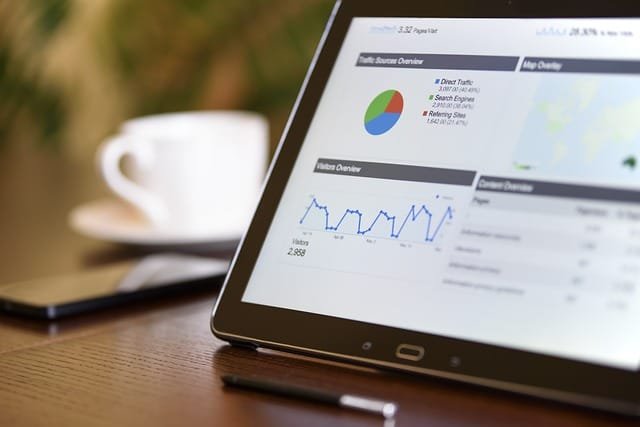This Article has been revised, edited and added to, by Poulomi Chakraborty.
- What Are Local Landing Pages?
- Why Local Landing Pages Are Important
- Key Elements of On-Page SEO for Local Landing Pages
- Optimizing Local Content
- Internal Linking
- Optimizing Images
- Mobile Optimization
- Call to Action
- Tracking and Analytics
- Conclusion
In today’s digital age, having a strong online presence is crucial for businesses of all sizes and industries. For local businesses, this is especially true as more and more consumers are turning to the internet to find local products and services. One of the most effective ways to improve your local online presence is by optimizing your local landing pages for search engines. This guide will provide a comprehensive overview of on-page SEO for local landing pages.
What Are Local Landing Pages?

Before we dive into the specifics of on-page SEO, let’s first understand what local landing pages are. Local landing pages are pages on your website that are specifically designed for visitors from a particular geographic location. For example, a national chain of restaurants might have separate landing pages for each of their locations, each containing information relevant to that specific location such as address, opening hours, and local promotions.
These pages are not just for businesses with multiple locations. Even if you have a single location, a local landing page can help your business appear in local search results and attract more local customers.
Why Local Landing Pages Are Important

The importance of local landing pages cannot be overstated. They play a crucial role in a business’s online visibility and can significantly impact its bottom line. Here are some reasons why local landing pages are indispensable:
Capture Local Traffic
People often search for services and products near them. By having a local landing page, you capture the attention of potential customers in your area. When someone searches for a product or service in your locality, a well-optimized local landing page can help your business appear in the local search results, thereby increasing the chances of attracting local traffic to your site.
Increase Conversion Rates
Local landing pages can be customized to appeal specifically to the local audience. By providing localized content, promotions, and testimonials, you show that your business is a part of the local community, which can build trust and increase the likelihood of conversion. Moreover, local landing pages can also include specific calls to action that are most relevant to the local audience, further increasing the chances of conversion.
Improve Local SEO
Search engines prioritize local businesses in the search results when users make local searches. Having a well-optimized local landing page signals to search engines that your business is relevant to the local area, which can help improve your local search rankings. This is particularly important for businesses that serve a specific geographic area as it can lead to more visibility, more traffic, and ultimately more customers.
Provide Relevant Information
Local landing pages allow you to provide information that is specifically relevant to the local audience. This includes local contact information, opening hours, directions, local events, and promotions. Providing this information can make it easier for potential customers to find and contact your business, and can also help build trust and credibility.
Competitive Advantage
Many businesses, particularly small and medium-sized ones, do not fully optimize their websites for local search. By creating well-optimized local landing pages, you can gain a competitive advantage in your local market. This can help your business stand out from competitors and attract more local customers.
Cost-Effective Marketing
Local landing pages are a cost-effective way to market your business to a local audience. Unlike paid advertising, which can be expensive, creating local landing pages is relatively inexpensive. Moreover, once created, local landing pages can continue to attract traffic and generate leads over time without any ongoing costs.
Enhance Mobile User Experience
More and more people are using their mobile devices to search for local businesses. Local landing pages optimized for mobile devices can provide a better user experience for mobile users. This includes faster load times, easy navigation, and click-to-call buttons. A better mobile user experience can lead to higher conversion rates and more satisfied customers.

Related: Check out our free SEO suite

Key Elements of On-Page SEO for Local Landing Pages
Expanding the digital footprint of your startup through well-optimized local landing pages can significantly amplify your visibility and customer engagement. Delving deeper into the on-page SEO elements, we’ll explore nuanced strategies that go beyond basic optimization, focusing on creating a magnetic pull for local searches. This approach will ensure your startup not only garners attention but also builds a robust digital presence in the local ecosystem.
Understanding the Core of On-Page SEO

On-page SEO is the soul of your website’s visibility in search engines. It’s about making your local landing pages not only understandable to search engines but also deeply engaging to your target audience. The essence lies in meticulously crafting each element of your page – from content to metadata, ensuring they work in harmony to elevate your local search rankings.
The Art of Semantic Relevance in Keywords
While traditional keyword research forms the foundation, the next level is to weave a web of semantic relevance around your primary keywords. This involves identifying and integrating related terms and phrases that your target audience might use in a conversational context.
Tools like Google’s “People Also Ask” and “Related Searches” sections provide a treasure trove of insights into these semantic relationships. Incorporating these into your content not only enriches its relevance but also aligns with the natural language processing capabilities of modern search engines, enhancing your page’s visibility.
Crafting Title Tags That Captivate
Your title tag is the first handshake between your landing page and potential customers. It needs to be more than just optimized; it needs to captivate. Incorporate your primary keyword in a manner that feels natural and inviting.
Experiment with formats that spark curiosity or offer clear value, making sure your title stands out in the sea of search results. Remember, the goal is to entice the user to click through to your page, so think beyond SEO to what appeals to your target audience’s interests and needs.
Meta Descriptions: Your Marketing Pitch
Think of your meta description as a succinct marketing pitch to your potential customers. It’s your opportunity to differentiate your offering in a few compelling sentences. Embed your primary and semantic keywords smoothly within a narrative that promises value.
Highlight what makes your local business unique and why a visitor should choose you over competitors. This section isn’t just for search engines; it’s a direct appeal to your future customers.
Content That Connects and Converts
Beyond incorporating keywords, your local landing page’s content should connect with your audience on a personal level. Share stories of your local involvement, customer testimonials specific to the region, and case studies that showcase your success in the area.
This strategy not only enhances keyword relevance but also builds trust and encourages engagement. Make sure your content answers the specific questions local customers might have, addressing their needs and pain points with solutions your business offers.
Advancing Beyond the Basics
Leveraging Advanced Schema Markup
While basic local business schema markup is essential, advancing to more detailed structured data can significantly boost your visibility. Implement event schema for local events you’re hosting or participating in, offer schema for special deals, and FAQ schema for common questions about your services. This detailed structured data can lead to rich snippets in search results, increasing click-through rates and providing direct answers to users’ queries right in the SERPs.
Dynamic Internal Linking Strategies
Internal linking is not just about SEO; it’s about creating a journey for your visitor. Use it to guide them through your site, from the initial service description to related case studies, blog posts detailing your community involvement, and finally, to a compelling call to action. This journey should feel natural, guiding the user deeper into your site and gently nudging them towards conversion with each click.
Image Optimization with a Twist
While the basics of image optimization are well-known, take it a step further by incorporating geotagging for local relevance. Embedding location metadata in your images can enhance their local search visibility, especially in image searches related to your area. Additionally, create an image sitemap and submit it to Google Search Console to ensure all your visually compelling content is indexed and visible in search results.
The Symphony of On-Page SEO
Crafting an effective on-page SEO strategy for your local landing pages is akin to conducting a symphony. Each element, from keyword-rich content to structured metadata and internal linking, plays a crucial part in harmonizing your startup’s digital presence.
By going beyond the basics and embedding advanced, strategic SEO practices into your local landing pages, you’re not just optimizing for search engines; you’re crafting a narrative that resonates with your local audience, builds trust, and drives conversions. This nuanced approach ensures that your startup not only ranks well in local searches but also connects deeply with the community you serve.
Optimizing Local Content

Local content optimization is a linchpin in the quest to dominate local search results, acting as a bridge between your business and the community it serves. This section dives into advanced strategies to elevate your local landing pages, ensuring they resonate with local audiences and search engines alike. By adopting a holistic approach, startup founders can craft content that not only ranks well but also genuinely engages and converts local visitors.
The Foundation of Local Content Relevance
Cultivating a Local Voice
The essence of connecting with your local audience lies in your ability to speak their language — literally and figuratively. This means going beyond inserting local keywords into your content. It’s about embedding your brand into the local culture.
Share stories of local engagements, partnerships with other local businesses, and participation in community events. Use local dialects or slang with finesse to reflect familiarity and authenticity. This strategy fosters a deeper connection with your audience, making your business feel like a part of the community’s fabric.
Hyper-Localized Content
Creating content that addresses the specific needs, interests, and characteristics of your local audience is crucial. This involves tailoring your messages to reflect local events, holidays, and community issues. For instance, if your startup is based in a city known for its annual festival, creating content that aligns with this event can captivate local interest. Similarly, addressing local issues or trends in your content can elevate your relevance in local search queries, positioning your business as a local authority.
Enhancing Engagement Through Local Storytelling
Leveraging Local Success Stories
Customer testimonials and case studies are powerful, but their impact multiplies when they’re locally oriented. Highlighting success stories of local clients or customers not only provides social proof but also demonstrates your effectiveness within the specific context of your community. These narratives should be detailed, highlighting the customer’s journey from problem to solution, and explicitly mentioning local landmarks or specifics to reinforce the local connection.
Collaborating with Local Influencers and Entities
Partnerships with local influencers, businesses, and organizations can provide a treasure trove of content opportunities. Co-create content with these entities to tap into their audience and enhance your local credibility. This could be in the form of guest blog posts, interviews, or joint event coverage. Such collaborations not only expand your reach but also enrich your content with diverse local perspectives.
Technical Excellence in Local Content
Structuring Content for Local SEO
While the narrative and engagement strategies are vital, the underlying structure of your content plays a crucial role in its visibility. Ensure your local landing pages are structured with clear headings (H1, H2, H3) that incorporate local keywords and topics. This not only aids in readability for your visitors but also helps search engines understand the hierarchy and relevance of your content, improving its chances of ranking for local searches.
Rich Media with Local Flavor
Incorporating images, videos, and other forms of multimedia can significantly enhance the appeal of your local content. Go beyond generic imagery by using photos of your actual business, your team, or events you’ve participated in around the community. Videos offering a tour of your location or testimonials from local customers add authenticity and can improve engagement metrics, signaling to search engines the quality and relevance of your page.
Continuous Optimization and Analysis
Utilizing Analytics for Local Insights
Tracking how your local content performs is essential for ongoing optimization. Use analytics tools to monitor which pieces of content are driving traffic, engagement, and conversions. Pay special attention to metrics such as bounce rate and time on page for insights into content relevance and user experience. This data can guide your content strategy, helping you to refine and focus on what works best for your local audience.
Engaging with Local Feedback
Encourage and monitor feedback on your local content, whether through comments, social media interactions, or direct communication. This feedback is invaluable for understanding your local audience’s needs and preferences. Responding to comments and engaging with your audience not only fosters a community around your brand but also provides insights for future content creation.
Internal Linking

Internal linking is not merely a foundational SEO tactic; it’s a powerful tool to enhance the user experience and strengthen the SEO performance of your local landing pages. For startups looking to make their mark in local searches, mastering the art of internal linking can provide a significant edge. This guide dives into the nuances of creating an internal linking strategy that not only boosts SEO but also aligns with your business goals, driving both traffic and engagement.
The Role of Internal Linking in User Navigation
Crafting a Seamless User Journey
Internal linking serves as the navigation framework of your website, guiding visitors through a journey that aligns with their interests and your business objectives. By strategically placing links to relevant content, you can lead potential customers from initial discovery to deeper engagement and, ultimately, to conversion. This journey should feel intuitive, with each link offering a clear value proposition that encourages further exploration.
Enhancing Local Relevance Through Targeted Links
For local landing pages, internal linking offers a unique opportunity to emphasize local relevance. By linking to pages that highlight local services, events, or case studies, you can reinforce your connection to the community and local search intent. This not only improves user engagement but also signals to search engines the local focus of your content, potentially boosting your visibility in local search results.
Advanced Internal Linking Strategies for Startups
Utilizing Anchor Text to Drive SEO and User Engagement
The anchor text, or the clickable text in a hyperlink, plays a crucial role in internal linking. Opt for descriptive, keyword-rich anchor texts that clearly indicate the value of the linked page, both to users and search engines. However, it’s crucial to maintain a natural flow in your content; over-optimization can detract from user experience and may trigger search engine penalties.
Strategic Link Placement for Maximum Impact
The placement of internal links within your content can significantly affect their performance. Links placed higher in the content, particularly within the first few paragraphs, tend to carry more weight with search engines and are more likely to be clicked by users. Consider the structure of your content and where a link would feel most natural and beneficial for the reader’s journey.
Building a Structured Internal Linking Architecture
Mapping Out a Hierarchical Website Structure
A well-thought-out website structure is essential for effective internal linking. Your site should have a logical hierarchy, with main categories leading to subcategories and individual pages. This structure not only aids in user navigation but also helps search engines understand the relationship and relevance of pages within your site. For local landing pages, consider creating a dedicated category or section that groups all local content, making it easier for users and search engines to find related content.
Linking to High-Authority Pages
Identify high-authority pages within your website, such as your homepage or main service pages, and link from these pages to your local landing pages. This internal linking strategy can help distribute page authority throughout your site, boosting the SEO performance of lower-authority pages. It’s a way of telling search engines that your local landing pages are important and should be ranked accordingly.
Monitoring and Optimizing Your Internal Linking Strategy
Analyzing Internal Link Performance with Analytics
Regularly monitor the performance of your internal links to understand how they contribute to user behavior and SEO outcomes. Use analytics tools to track metrics like click-through rates and the path visitors take through your site. This data can reveal insights into which links are most effective and which pages might benefit from additional internal linking support.
Continuous Refinement for Peak Performance
Based on your analysis, continuously refine your internal linking strategy. This might involve adding new links to reflect updated content, removing links that no longer provide value, or adjusting anchor texts to improve relevance and click-through rates. The goal is to create a dynamic internal linking structure that evolves with your website and continues to support your SEO and business objectives.
Optimizing Images
In the realm of on-page SEO for local landing pages, optimizing images transcends basic enhancements, morphing into a strategic endeavor that can significantly elevate a startup’s online visibility and engagement. This guide delves into advanced tactics and thoughtful considerations that empower startups to leverage their visual content not just as aesthetic additions, but as potent tools for local SEO success.
Crafting Images That Speak to Local Audiences
Infusing Local Flavor into Visual Content
To resonate with local audiences, your images should reflect the community’s essence, landmarks, culture, or events that are identifiable to locals. This strategy not only strengthens your local presence but also enhances user engagement by presenting relatable visuals. Consider commissioning custom photography that showcases your business’s interaction with local landmarks or participation in community events. This authentic approach can significantly boost your local identity and appeal.
Personalization and Storytelling through Images
Visual storytelling is a powerful method to connect with your audience on an emotional level. Use images to tell the story of your brand’s journey within the local community, including your contributions, achievements, and the people behind your business. Personalized images that narrate your startup’s story or mission can foster a deeper connection with local customers, encouraging them to invest in your brand both emotionally and financially.
Advanced Image Optimization Techniques
Beyond Basics: Technical Image Optimization
While optimizing file names and alt text remains crucial, further technical refinements can amplify your images’ SEO impact. Implementing responsive images through HTML5’s <picture> element or attributes like srcset ensures that the most appropriate image size is delivered based on the user’s device, improving load times and user experience. Additionally, consider using next-gen image formats like WebP, which offer superior compression and quality characteristics compared to traditional formats like JPEG and PNG. This not only speeds up page loading times but also positively affects your SEO rankings.
Leveraging EXIF Data for Local SEO
EXIF data, metadata embedded within an image file, can include details such as the image’s creation date, camera settings, and crucially, geolocation information. By incorporating geotagged images on your local landing pages, you provide search engines with another layer of local relevance, subtly boosting your local SEO efforts. Ensure that this information is relevant and accurately reflects the image’s connection to your local area.
Strategic Deployment of Visual Content
Image Sitemaps for Enhanced Discovery
To ensure that search engines can discover and index all the images on your local landing pages, create and submit an image sitemap. This is particularly important for images that are loaded through JavaScript or housed in galleries, which might otherwise be overlooked by search engine crawlers. An image sitemap can significantly improve your images’ visibility in search results, driving additional traffic to your site.
Integrating Images with Local Content and SEO Elements
Images should not exist in isolation on your local landing pages; they need to be seamlessly integrated with your textual content and other on-page SEO elements. Ensure that your images support and are supported by the surrounding content, with relevant keywords included in the image’s file name, alt text, and if applicable, surrounding captions. This integrated approach reinforces the relevance of your images to both your content and local search queries.
Measuring the Impact of Your Image Optimization Efforts
Tracking Image Performance in Search Results
Utilize tools like Google Search Console to monitor how your images perform in search results. Analyze metrics such as click-through rates from image searches to gauge the effectiveness of your optimization efforts. Insights gained can inform adjustments to your strategy, such as revising alt texts, updating images, or refining your image sitemap.
Continuous Optimization Based on Analytics
Image optimization is not a one-time task but an ongoing process that requires regular review and adjustment. Use analytics to identify which images drive engagement and conversion, and continuously refine your strategy based on these insights. Testing different images and formats can reveal what resonates best with your local audience, allowing you to tailor your visual content strategy for maximum impact.
Mobile Optimization

In today’s digital ecosystem, mobile optimization is not just a feature—it’s a cornerstone of a successful local SEO strategy. For startups aiming to capture the attention of a mobile-first audience, optimizing local landing pages for mobile devices is paramount. This guide explores comprehensive strategies for enhancing mobile user experience, ensuring that your local landing pages not only rank well but also provide exceptional usability and speed on mobile devices.
Embracing the Mobile-First Mindset
Designing with Mobile in Mind
Start the design process with mobile users at the forefront. This involves adopting a mobile-first design philosophy that prioritizes the limitations and opportunities of mobile devices. Consider the size of touch targets, streamline navigation to be thumb-friendly, and ensure that all critical information and calls to action are prominently displayed without the need for excessive scrolling or zooming. This approach ensures that the most essential elements of your local landing pages are easily accessible to mobile users, enhancing user engagement and satisfaction.
Responsive Design as a Standard
Implementing responsive web design ensures that your local landing pages automatically adjust to fit the screen size of any device, providing an optimal viewing experience across a wide range of mobile devices. Use flexible grid layouts, responsive images, and media queries to achieve a seamless transition between different screen sizes. This not only improves the user experience but also consolidates your SEO efforts under a single URL, which is beneficial for your page’s search engine ranking.
Enhancing Mobile Page Speed
Prioritizing Loading Speed
Mobile users expect quick access to information, making page loading speed a critical factor in mobile optimization. Utilize tools like Google’s PageSpeed Insights to identify and rectify common issues that slow down your site, such as unoptimized images, excessive JavaScript, and CSS loading times. Implementing techniques such as lazy loading for images and videos can also significantly reduce initial page load times, keeping mobile users engaged.
Leveraging Accelerated Mobile Pages (AMP)
For content-heavy local landing pages, consider implementing Accelerated Mobile Pages (AMP). AMP is an open-source framework designed to create fast-loading web pages on mobile devices. While AMP versions of pages can strip down some of the visual elements and functionalities to achieve speed, they can offer an exceptionally quick and streamlined user experience for reading content, potentially improving visibility in mobile search results.
Optimizing for Local Search on Mobile
Local Keywords in Mobile Context
When optimizing content for mobile users, incorporate local keywords in a manner that reflects mobile search behavior. Mobile searches are often more conversational and may include voice search queries. Integrate natural language phrases and question-based keywords that mobile users are likely to use when searching for local businesses or services. This strategy enhances your visibility in local search results and aligns with the way users naturally interact with their mobile devices.
Mobile-Friendly Calls to Action
The calls to action (CTAs) on your local landing pages should be designed for easy interaction on mobile devices. Large, easily clickable buttons, clear and concise text, and compelling action words can dramatically increase conversion rates from mobile users. Consider the placement of your CTAs carefully, ensuring they are visible without scrolling too much and are placed at natural points in the user journey where they are most likely to take action.
Continuous Mobile Usability Testing
Regular Testing Across Devices and Browsers
Mobile devices and browsers are continually evolving, making regular testing a necessity to ensure optimal performance across all platforms. Use a variety of tools and services to test your local landing pages on different devices, screen sizes, and browsers. This helps identify any usability issues, such as text that’s too small to read, elements that don’t resize correctly, or interactive features that don’t work as intended on certain devices.
Gathering User Feedback for Iterative Improvement
User feedback is invaluable for identifying areas of improvement in the mobile experience. Encourage feedback from users about their experience navigating your local landing pages on mobile devices. This can be achieved through on-page surveys, feedback forms, or direct outreach to customers. Use this feedback to make iterative improvements, focusing on enhancing the aspects that users care about most.
Call to Action
A well-crafted call to action (CTA) is the climax of your local landing page’s narrative, guiding users towards a decisive interaction that benefits both the user and your startup. This section delves into strategies for creating effective CTAs that resonate with your local audience, driving conversions and fostering engagement. For startups looking to enhance their digital footprint in local markets, understanding and implementing these strategies is crucial.
Crafting Compelling Calls to Action
The Psychology of Action
Understanding the psychology behind user actions is fundamental in crafting a CTA that converts. Users are motivated by clear benefits, so your CTA should articulate what they stand to gain by taking the next step. Whether it’s a free consultation, a discount on services for local customers, or access to exclusive local content, highlighting the value proposition explicitly can significantly increase the likelihood of engagement.
Clarity Meets Urgency
A compelling CTA is a blend of clarity and urgency. It should leave no doubt about what action you want the user to take, using precise, action-oriented language. Incorporating elements of urgency, such as time-limited offers or low stock for local customers, can create a sense of immediacy that encourages users to act swiftly.
Designing CTAs for Maximum Impact
Visibility and Design
The design and placement of your CTA can profoundly affect its performance. It should stand out visually from the rest of the page, using colors, fonts, and sizes that draw attention without clashing with your overall design aesthetic. Consider the F-pattern or Z-pattern reading behaviors when placing your CTAs, ensuring they are positioned where users naturally focus their attention.
Mobile Optimization for CTAs
With a significant portion of local searches performed on mobile devices, your CTA must be optimized for mobile users. This means designing buttons that are easily tappable with a finger, with sufficient padding to prevent accidental clicks. The CTA should be prominently placed without requiring users to scroll excessively, accommodating the limited screen real estate of mobile devices.
Leveraging A/B Testing for Continuous Improvement
The Power of A/B Testing
A/B testing is an invaluable tool for optimizing your CTAs. By creating two versions of your landing page, each with a different CTA design, placement, or wording, you can gather data on which variation performs better. This data-driven approach allows you to refine your CTAs based on actual user behavior and preferences, rather than assumptions.
Iterative Testing for Long-Term Success
Effective A/B testing is not a one-off task but an ongoing process of refinement. Continuous testing over time, incorporating variations in language, design, and placement, can help you fine-tune your CTAs to perfection. This iterative approach ensures that your CTAs remain effective as user behaviors and market dynamics evolve.
Integrating CTAs with Your Local SEO Strategy
Aligning CTAs with Local Keywords and Content
For local landing pages, integrating your CTAs with local SEO elements can enhance their effectiveness. This includes aligning the language of your CTAs with local keywords and the local-focused content of your landing page. Such integration ensures that your CTAs resonate with the local context of the page, making them more relevant and compelling to your target audience.
Localizing CTAs for Different Markets
If your startup serves multiple local markets, consider localizing your CTAs for each specific market. This could mean customizing the language, offers, and even the design of your CTAs to match local preferences and cultural nuances. Localized CTAs can significantly increase conversion rates by appealing directly to the unique characteristics and needs of each local audience.
Tracking and Analytics

One of the most important aspects of any online marketing strategy, including optimizing your local landing pages, is tracking and analyzing their performance. This involves collecting data on how users interact with your pages, and then using this data to make informed decisions about how to improve your pages to better meet your business goals.
Use Google Analytics
Google Analytics is one of the most popular and powerful analytics tools available. It allows you to track a wide range of metrics related to your local landing pages, including:
- User Behavior: This includes metrics like the number of visitors to your page, how long they stay on your page, and the actions they take while on your page (e.g., clicking on a call-to-action, filling out a contact form, etc.).
- Traffic Sources: This includes information on how visitors are finding your page, whether it’s through organic search, paid search, social media, or direct traffic.
- Conversion Rate: This is the percentage of visitors to your page who complete a desired action, such as making a purchase, signing up for a newsletter, or filling out a contact form.
Setting Up Goals in Google Analytics
Goals in Google Analytics allow you to track specific user interactions on your site. These user interactions can be anything from form submissions, page views, or even events like clicks or social media shares. Setting up goals is essential to measure how well your site or app fulfills your target objectives.
Use Google Search Console
Google Search Console is another valuable tool for tracking the performance of your local landing pages. It provides insights into how your pages are performing in the Google search results, including:
- Search Queries: This includes information on the search queries that are leading users to your page.
- Impressions, Clicks, and Click-Through Rate: This includes information on how often your page is appearing in the search results (impressions), how often it is being clicked on (clicks), and the click-through rate (CTR), which is the percentage of impressions that result in a click.
- Position: This is the average position of your page in the search results for a particular query.
Use Heatmaps
Heatmaps are visual representations of data that show how users interact with your pages. They can show you where users are clicking on your page, how far they are scrolling down your page, and more. This information can be valuable for optimizing the layout of your page, the placement of your calls-to-action, and other elements of your page.
Track User Behavior
User behavior metrics such as bounce rate, pages per session, and average session duration can provide valuable insights into how users are interacting with your local landing pages. For example, a high bounce rate (the percentage of visitors who leave your site after viewing only one page) may indicate that your page is not meeting the expectations of visitors, and may need to be optimized.
Track Conversions
Conversions are the actions you want users to take on your local landing pages, such as making a purchase, signing up for a newsletter, or filling out a contact form. It is important to track these conversions to understand how well your pages are performing in terms of meeting your business goals.
A/B Testing
A/B testing involves creating two versions of a page, and then randomly showing one version to half of your visitors, and the other version to the other half. You can then compare the performance of the two versions to determine which one is more effective in terms of meeting your business goals. This can be a valuable tool for optimizing your local landing pages.
Monitor Load Time
The load time of your page can have a significant impact on its performance. Users expect pages to load quickly, and if your page takes too long to load, it can result in a poor user experience, and can also negatively impact your search rankings. It is important to monitor the load time of your local landing pages and to optimize them for speed.
Conclusion
In conclusion, optimizing your local landing pages for search engines is a multifaceted endeavor that extends beyond mere keyword inclusion. It demands a strategic approach that encompasses the meticulous crafting of content, leveraging of local SEO elements, and the integration of technical SEO practices. By focusing on creating engaging, locally relevant content, optimizing for mobile users, and refining calls to action, startups can significantly enhance their visibility and attract more local customers.
Moreover, continuous analysis and adaptation, based on user feedback and performance metrics, are crucial for staying ahead in the dynamic landscape of local SEO. Ultimately, the goal is to build a strong online presence that not only ranks well in search results but also resonates with the local community, driving traffic and fostering conversions. Embracing these strategies will equip startups with the tools they need to thrive in the competitive digital marketplace, ensuring their local landing pages are not just seen, but are also compelling enough to convert visitors into loyal customers.
Read Next:
- How to Use Google Trends for Keyword Research
- How to Use Quizzes and Surveys for Lead Generation
- Role of Technical SEO in Google Search Rankings
- How to Create a Digital Marketing Plan: The Complete Guide
- How to use Eloqua: An Explainer
- Recent Trends in Mergers and Acquisitions in the US (2023)






















Comments are closed.